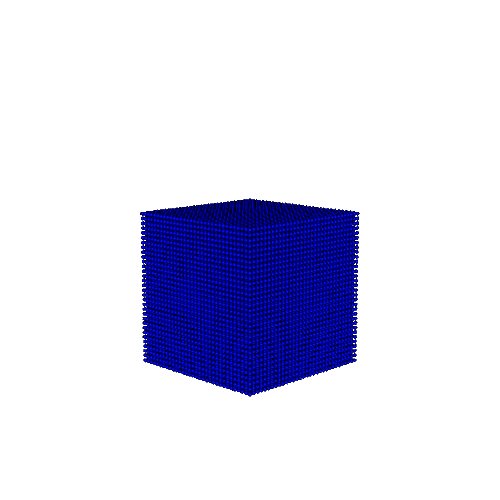Leverage the power of high-performance computing in minutes.
Generate Synthetic Data for Physics-Informed ML

Training Physics-Informed Machine Learning (PIML) models often requires large, diverse datasets that reflect real-world physical behavior. However, collecting such data through experiments or high-resolution simulations can be time-consuming and expensive. That’s where synthetic data generation becomes essential.
In this tutorial, you'll learn how to generate high-quality synthetic datasets at scale using the Inductiva API. By leveraging Inductiva's ability to run hundreds of machines in parallel, we can dramatically accelerate the dataset generation process. Instead of relying on high-performance (and high-cost) machines, our approach emphasizes scalability — using a large number of cost-effective instances to maximize efficiency while keeping costs under control.
We'll walk through a real-world example based on a published study by Sánchez-González et al., in which a Graph Neural Network (GNN) is trained on data generated using Smoothed Particle Hydrodynamics (SPH) to simulate complex fluid dynamics. The study demonstrates how GNNs can learn to model physical systems directly from data, without relying on traditional numerical solvers.
As summarized in the research abstract:
This work uses a state-of-the-art deep learning model to learn the dynamics of fluids and to simulate how they flow without the need for solving the physics equations that govern the phenomenon. The proposed model is based on a Graph Network architecture, which takes as input a graph whose nodes represent fluid particles and edges physical interactions among them. The model performs sequential steps of computations involving the nodes that are connected by edges to predict how the fluid flows. (…) The model is trained on data generated with Smoothed Particle Hydrodynamics, a Lagrangian method in Computational Fluid Dynamics that simulates fluids as a set of particles.
So, where does this training data come from?
In the following sections, you’ll learn how to:
- Build a base SPH simulation using SPlisHSPlasH, the same open-source solver used in the original study.
- Configure simulation parameters to reflect real-world variability.
- Scale up to generate thousands of meaningful dataset variations for model training.
Whether you're a Machine Learning engineer or a simulation expert, this tutorial offers a practical, scalable workflow for generating your own synthetic datasets to power Physics-informed ML models.